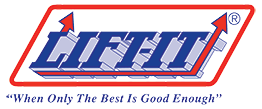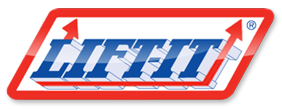The effect of active chemical exposure on synthetics is an important consideration for responsible sling users, safety and training professionals. Many aspects must be considered. Time, temperature and concentration are primary considerations, but certainly not the only factors.
For many years we have relied upon yarn engineers at various webbing mills where synthetic materials are made into webbing products for their opinions on application or suitability. The problem with those opinions is that they generally DO NOT take into account the cumulative effect of multiple chemicals and/or unique environmental factors. We also surveyed more than one mill to determine if all responses would be similar.
Beyond chemical compatibility, other factors must also be considered. An example would be if certain chemical agents are exposed to moisture or UV light resulting in degradation that would not be realized in dry or dark applications.
For these reasons we have always encouraged sling users to work with their suppliers and ultimately their manufacturers to determine the effects of exposure in real world settings with adequate controls to validate results through the scientific method.
There is new vigor in the concern for the effects of marking pen ink commonly used in the fabrication of synthetic products and sling safety.
Years ago we presented our prime supplier at the time, Murdock Webbing with the MSDS for Sharpie Markers and their analysis revealed that nothing in the ingredients would be harmful to either nylon or polyester materials.
Most recently at a Canadian Crane and Safety Conference, the issue was raised again when information from a marker manufacturer stated that Xylene could be harmful to synthetic materials.
We contacted Avery Dennison, manufacturer of Marks-A-Lot markers and Newell- Rubbermaid, manufacturer of Sharpie markers and requested their assessment of the chemical effects of the marker ink ingredients on synthetic webbing. Given today’s global economy we attempted obtaining this information from phone contacts in foreign countries and given the litigious society we did not receive expedient responses. To date, the only response we have received is from Avery Dennison. Their representative stated Xylene was not an ingredient in their product and cited the legal jargon referencing the doctrines of implied and express warranties of merchantability and fitness.
We also contacted three webbing manufacturers to obtain their opinion by providing MSDS information for both markers. We also asked that the effects of UV exposure combined with all chemical ingredients be taken into account to determine if the interaction would be deleterious. A summary follows:
Webbing Mill No. 1
“Based on the information supplied to us by Kordsa, Nylon has excellent resistance to Xylene. Polyester on the other hand is not resistant to Xylene. As far as the effects by adding UV exposure, I could find no information. We would only need to worry about the added effects of UV on Nylon”.
(OK, Mr. Webbing Mill Manufacturer No. 1. You should purchase a copy of the WSTDA-UV study as UV degradation also affects polyester fibers!)
Webbing Mill No. 2
“I couldn’t find any data supporting the combination with UV rays but what I did find says that Xylene is not harmful to polyester but it is harmful to nylon. Nylon will lose 10-20% of its strength after 10 hours and at a temperature of 282 F in combination with Xylene. Hope this helps. Sounds like polyester is the best bet for the application and it should be better for UV as well”.
Follow up Question and reply for Web Mill No. 2:
Q: What was the concentration of the Xylene in your recommendation based upon?
A: “The concentration was 100% and this data was for yarn only. With a web being thicker, who knows?”
Webbing Mill No. 3
The quick answer is that as an organic solvent, Xylene is on the list of TOCs, so it is ‘harmful’ under certain circumstances. But it is a commonly used solvent, cleaning agent, etc. It is subject to photo-oxidation, with the production of by-products that are also chemically active. Polyester is not considered to be stable to Xylene even at 15C. So, if you had continuous contact with Xylene and polyester it would be an issue and would begin to break down the yarn in a short period of time. Polyamides (nylon) tend to have pretty good resistance to most aromatic hydrocarbon solvents at room temperatures so no issue there.
Sharpie markers causing problems due to Xylene content in the ink is the point of the question. I would not expect the use of such a marking pen on an organic polymeric material under normal temperatures/light exposure to cause degradation of the polymeric material due to the Xylene content in the ink. The Xylene will evaporate very quickly upon making a mark with the pen so there will be no degradation.
Most of this data is from the technical resource I use at Clemson’s textile school down the road from us. (Dr. Deborah Lickfield)
Webbing Mill 1 and 2 respond with conflicting information: Webbing Mill 1 claims Nylon would be better resistant to the effects of Xylene, while Webbing Mill 2 opines that polyester would be a better fiber. If you are confused at this point, you should be! There seems to be some agreement between Webbing Mill 1 and 3 relative to the superiority of nylon to polyester with respect to Xylene exposure.
Lift-It Manufacturing has used Marks-a-Lot and Sharpie markers for nearly 33 years and has had not experienced a single incidence of sling failure as a result of exposure to the ink ingredients in the aforementioned markers. We have pulled thousands of slings to destruction in both new and aged states (10-15 year old slings) and obtained satisfactory results.
In my involvement with Web Sling and Tie Down Association (WSTDA), I queried 50 manufacturers at the 30th Annual Meeting in Newport Rhode Island and no one had a single case to report relative to failure or incidence resulting from exposure of webbing to marker pen ink.
I would also stipulate that my comments are made STRICTLY from the context of synthetic slings and DO NOT apply to marker pens used on fall prevention equipment, harnesses, etc.
My comments also DO NOT apply to ALL marker pens, just the two previously mentioned brands. Other markers may contain different ingredients and entirely different results.
From an assessment standpoint it would be impossible to determine the specific marker manufacturer and the specific ingredients if field personnel were marking products. If the marking is done to record inspection and testing there are far better ways to accomplish the objective: RFID, Inspection Loops, Non-Metallic Inspection Tags, etc.
Responsible users need to contact their manufacturers for their assessment to determine the effects of the specific ink used on synthetic products.
It was interesting to note that on the surface Xylene is a TOC (Toxic Organic Chemical), but that the evaporation process would need to be considered. It was also interesting to note that Mill No. 2 when queried replied that the analysis was based upon a 100% concentration and that Xylene penetration would be a function of material thickness and resultant degradation.
Based upon the information received from Webbing Mill No. 3, the testing done by Lift-it on unused, new and old slings, we can say that the ink used to mark slings manufactured by Lift-It does not degrade our synthetic slings.
Sincerely,
Mike Gelskey, Sr.
Chief Executive Officer

